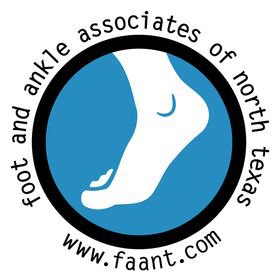One of the most common problems we see in our office is pain in the ball of the foot. This pain often occurs just behind the toes and can feel like aching, throbbing, sharp, tingling, burning, numbness, tenderness or the feeling of a rolled-up sock. Many patients immediately think that their diagnosis is something called a Morton's Neuroma. Neuromas are enlargements of normal nerve tissue that are usually caused from the repetitive trauma of running, narrow shoes and barefoot walking (yes, that includes cheap flip flops!). The pain usually resides between the 3rd and 4th toes and patients report the feeling of a balled-up sock or stone, along with tingling, burning, or numbness shooting into the toes. Treatment includes wearing proper shoes and inserts to reduce pressure at the site of pain, steroid injections to the site of the nerve impingement, wider shoes, and avoid walking barefoot. If one or more steroid injections do not work, surgical removal of the painful nerve is usually the next step.
Surgery is not as common as one would think, as most patients improve if they follow the prescribed treatment regimen. There are also several gimmick treatments out there, including killing the nerve with painful alcohol injections, freezing the nerve or cutting a ligament that resides close to the nerve. However, if these treatments were as successful as removal of the nerve, they would be more commonly used.
But what if it's not a neuroma? There are many conditions that could be responsible for pain in the ball of the foot and many different treatment options, depending on the diagnosis. Here are some possible conditions that should be ruled out before coming to a definitive diagnosis. Diagnosis of these conditions includes a thorough medical history review, physical examination, x-rays and in some cases, a diagnostic ultrasound imaging in the affected area.
Metatarsalgia
Metatarsalgia is a painful condition that worsens with activity and is most common in older patients. The term metatarsalgia means that the metatarsal bone, which resides just behind the toes, hurts when walking barefoot or for prolonged periods of time. The most common causes are a long metatarsal bone and atrophy of the fat pad, making this condition more common in patients who are older and have seen the cushioning on their feet reduce. Because the cause is a lack of cushioning and increased pressure, treatment is aimed at decreasing pressure to the painful spot with appropriate shoes and inserts. With metatarsalgia, walking barefoot and wearing very high heels should be avoided.
Capsulitis
Capsulitis is an inflammation of the joint tissue on the pad of the foot. It is usually caused by untreated metatarsalgia, acute trauma to the pad of foot or repetitive walking without protecting this part of the foot. Capsulitis can also be improved by wearing proper shoes and inserts and avoiding barefoot walking. This condition can mimic a more serious condition called a plantar plate tear, so ultrasound imaging is often used to determine if this more painful condition is present. If capsulitis is confirmed, a steroid injection to the joint may be performed from the top of the foot after numbing skin with a cold spray. If a steroid injection is given and a tear to joint tissue is present, this can worsen the tear. This is why differentiating a plantar plate tear from capsulitis is so important. Patients who are being treated for capsulitis and are not improving, often have a plantar plate tear and may need to seek a second opinion. In most cases, capsulitis responds very well to injections and other conservative treatment.
Plantar Plate Tear
A plantar plate tear is the most serious condition to the pad of the foot. When a tear is present, a cure can only be achieved with surgical correction. While capsulitis is inflammation of the joint capsule and tissue, in a plantar plate the tissue ruptures, and the torn edges retract away from each other. This causes the toe to elevate, and it is often associated with a curled toe (hammertoe) or a bunion deformity. A plantar plate tear can be distinguished from a neuroma by moving the toe up and down at its connection to the foot, with a tear this is very painful, but with a neuroma this seldom causes pain. Conservative treatment of a tear is similar to the treatment of metatarsalgia. Treatment includes appropriate shoes and inserts, taping the toe down, or using a fabricated toe splint to pull the toe down. These conservative treatments only help to reduce pain but do not cure the condition. Surgical repair of the torn tissue is usually required, so if the early signs of joint pain are noted, seeking urgent treatment is recommended to prevent a plantar plate tear from developing.
Remember, not all ball of foot pain is a neuroma. Treatment is similar for all ball of foot conditions but varies depending on your diagnosis. Patients who are misdiagnosed often end up with chronic pain or unnecessary surgery. If you have been treating yourself at home without success, or have failed to improve with your current treatment, feel free to be seen for a second opinion. Nobody needs to suffer from long-term foot pain, especially if the diagnosis you are given doesn't match the symptoms.
Sponsored Content
